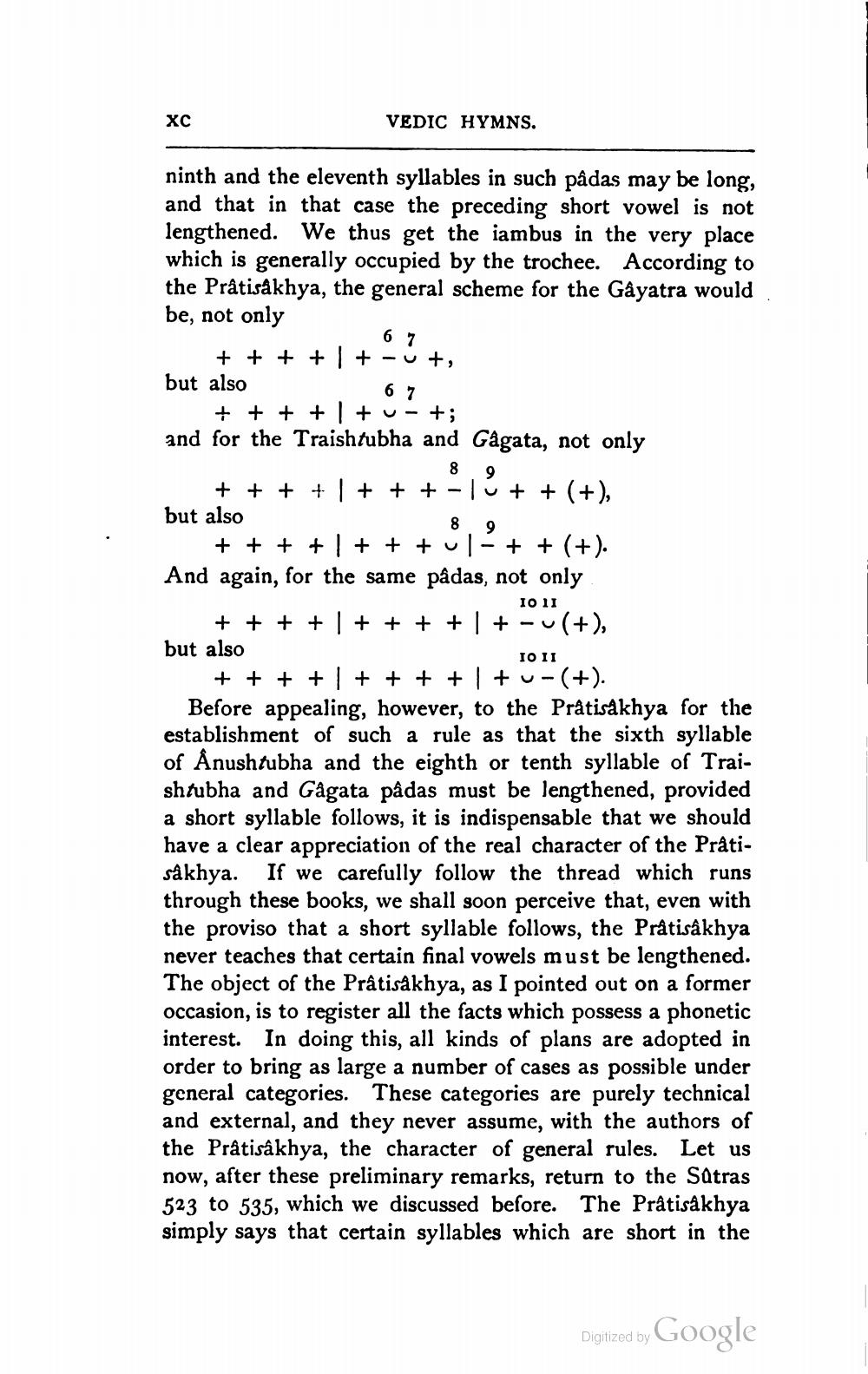________________
хс
VEDIC HYMNS.
ninth and the eleventh syllables in such pâdas may be long, and that in that case the preceding short vowel is not lengthened. We thus get the iambus in the very place which is generally occupied by the trochee. According to the Prâtisakhya, the general scheme for the Gayatra would be, not only
6 7 + + + + + -ut, but also
67 + + + + + u-+; and for the Traishtubha and Gågata, not only
8
9
8
0
IONI
+ + + + + + + -16 + + (+), but also
+ + + + + + + ul-+ + (+). And again, for the same pâdas, not only
+ + + + + + + + I + Cu(+), but also
1011 + + + + + + + + +u-(+). Before appealing, however, to the Prátisakhya for the establishment of such a rule as that the sixth syllable of Ånushtubha and the eighth or tenth syllable of Traishtubha and Gågata pâdas must be lengthened, provided a short syllable follows, it is indispensable that we should have a clear appreciation of the real character of the Prátisåkhya. If we carefully follow the thread which runs through these books, we shall soon perceive that, even with the proviso that a short syllable follows, the Prátisakhya never teaches that certain final vowels must be lengthened. The object of the Prâtisåkhya, as I pointed out on a former occasion, is to register all the facts which possess a phonetic interest. In doing this, all kinds of plans are adopted in order to bring as large a number of cases as possible under general categories. These categories are purely technical and external, and they never assume, with the authors of the Prátisâkhya, the character of general rules. Let us now, after these preliminary remarks, return to the Satras 523 to 535, which we discussed before. The Prâtisåkhya simply says that certain syllables which are short in the
Digitized by Google




